The Lion King Full Movie And Reviews Latest 2025
Introduction & Background
The Legacy of The Lion King (1994)
Few films in Disney’s long and illustrious history have left as profound a cultural imprint as The Lion King. Released in 1994, the original animated feature became an instant classic, resonating with audiences worldwide through its timeless story, memorable music, and emotional depth. It told the tale of Simba, a young lion cub destined to be king, whose journey of loss, self-discovery, and redemption touched viewers across generations.
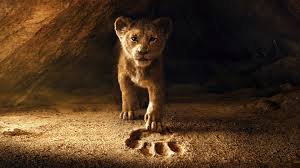
Its impact was staggering: The Lion King grossed nearly $1 billion during its original run, became one of the highest-grossing animated films of all time, and spawned one of Broadway’s most successful stage musicals, which continues to perform globally. Its story of the “Circle of Life” became a cultural mantra, blending Shakespearean tragedy (Hamlet is its most cited inspiration) with universal themes of family, betrayal, and destiny. For many, The Lion King was more than just a children’s movie—it was a rite of passage, a lesson in resilience, and a cinematic memory tied to their childhood.
So when Disney announced a “live-action” (or more accurately, photorealistic CGI) remake in 2016, expectations were monumental. The studio wasn’t just remaking any film—it was reimagining one of its most treasured crown jewels.
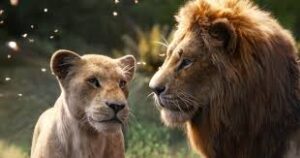
Disney’s Era of Remakes
By the late 2010s, Disney had begun systematically remaking its animated classics with cutting-edge technology and star-studded casts. This trend began with Alice in Wonderland (2010), directed by Tim Burton, and grew with Cinderella (2015), The Jungle Book (2016), Beauty and the Beast (2017), and Aladdin (2019). Each of these films achieved varying levels of critical success, but nearly all were box office juggernauts.
Disney executives recognized that nostalgia was a powerful tool. Adults who had grown up with the animated films wanted to relive their childhoods, while younger generations could experience the stories in a modern cinematic format. By combining advanced visual effects with familiar narratives and music, Disney created spectacles that appealed across demographics.
Yet no remake carried as much weight as The Lion King. It was not just a popular film; it was arguably Disney’s most emotionally resonant animated story. The task of remaking it would require more than technological innovation—it would demand reverence for the original while offering something fresh for contemporary audiences.
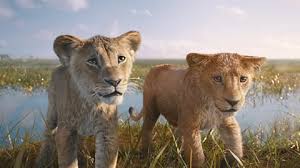
The Announcement and Anticipation
In September 2016, Disney confirmed that director Jon Favreau—who had just delivered the visually groundbreaking The Jungle Book remake—would helm The Lion King. The news immediately ignited global anticipation. Fans wondered: could lightning strike twice? Favreau’s Jungle Book had successfully blended live-action with CGI animals, creating an immersive world that felt both realistic and magical. The thought of him applying this same “virtual filmmaking” technique to The Lion King—a film populated entirely by animals—was both exciting and daunting.
Excitement skyrocketed further when casting announcements were made. Donald Glover (Childish Gambino) would voice adult Simba, while international superstar Beyoncé Knowles-Carter would lend her voice to Nala and also contribute to the soundtrack. James Earl Jones would return as Mufasa, giving continuity and gravitas to the new version. With additional casting of Chiwetel Ejiofor (Scar), Seth Rogen (Pumbaa), Billy Eichner (Timon), and John Oliver (Zazu), the film quickly became one of the most star-studded voice ensembles in modern cinema.
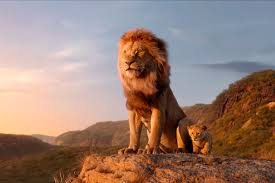
Disney fueled the hype with a teaser trailer released in November 2018. It faithfully recreated the iconic “Circle of Life” opening sequence shot-for-shot but with photorealistic animation. The trailer shattered online records, becoming one of the most viewed in history within its first 24 hours. The emotional weight of nostalgia combined with the awe of new technology was enough to convince audiences that this would be a once-in-a-generation cinematic event.
The Promise of Technology
What set The Lion King (2019) apart from previous remakes was its complete reliance on cutting-edge CGI. Unlike The Jungle Book, which at least had a human actor (Neel Sethi as Mowgli) interacting with digital animals, The Lion King would feature no live-action elements at all. Every blade of grass, every raindrop, and every lion was created digitally, rendered with astonishing photorealism.
Jon Favreau and his team employed “virtual production,” a groundbreaking technique that combined VR technology, game engine software, and traditional filmmaking methods. This allowed the crew to “step inside” a digital savannah, set up virtual cameras, and block scenes as if they were working on a physical set. In essence, it was a live-action production inside a fully animated environment.
Favreau emphasized that his goal was not to replace the original but to bring a new kind of cinematic experience. By blending the emotional resonance of the 1994 classic with immersive realism, he hoped to create something both timeless and modern.
Why Remake The Lion King?
The decision to remake The Lion King was not without controversy. Many questioned why a film so beloved and relatively recent (compared to Disney’s older classics) needed to be remade at all. Critics worried that photorealism might strip away the expressive animation that gave the original so much charm. How could a real-looking lion cry, sing, or emote without appearing unnatural? Would the new film feel like a technical showcase at the expense of emotional storytelling?
Yet Disney’s motivations were clear. Beyond the financial potential (which indeed proved massive), The Lion King remake was positioned as a showcase for the future of filmmaking. It was a demonstration of how far visual effects had come and a way to test the limits of digital storytelling. Moreover, it offered new generations a gateway to the story in a format that matched the cinematic trends of the late 2010s.
The Weight of Expectation
When The Lion King (2019) finally released in July 2019, it carried with it decades of emotional baggage, technological ambition, and cultural significance. It was not merely a movie release; it was an event. For some, it was a nostalgic return to childhood. For others, it was a visual revolution. For Disney, it was both a commercial juggernaut and a test of their strategy to reimagine classics for a new era.
The film entered theaters with an enormous burden: to honor the 1994 masterpiece while also proving that it could stand on its own as a work of art. Whether or not it succeeded remains a subject of debate—but there is no denying that it sparked conversation about technology, storytelling, and the future of cinema.
Production & Technology
Jon Favreau’s Vision
When Disney approached Jon Favreau to direct The Lion King (2019) after his success with The Jungle Book (2016), it was clear they wanted someone who could blend nostalgia with innovation. Favreau had already proven he could create a believable world where live actors and CGI animals interacted seamlessly. But The Lion King presented a far greater challenge: a film with no human characters at all. This meant the entire narrative, from emotional expression to world-building, would rest on computer-generated imagery.
Favreau approached the project with both reverence and ambition. He often described the 1994 original as “sacred text” and emphasized that he didn’t want to reinvent the story but rather “translate” it into a new form. His stated goal was to retain the emotional power of the original while using new technology to make the world of Simba, Mufasa, and Scar feel as if it truly existed in nature. In interviews, he admitted the danger of over-familiarity but also acknowledged that people’s nostalgia for the original could be a powerful emotional anchor.
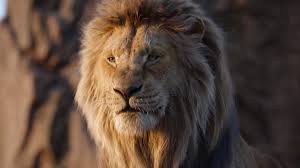
Virtual Production: A New Frontier
The most revolutionary aspect of The Lion King (2019) was its use of virtual production, a technique that blurred the lines between animation, live-action, and video game technology. Instead of working in a traditional animation studio, Favreau and his crew built a virtual reality environment using game engine software (Unity and later Unreal Engine).
This allowed cinematographers, camera operators, and set designers to wear VR headsets and “step inside” the digital African savannah. They could scout locations, set up virtual cameras, and even simulate real-world camera rigs such as cranes and Steadicams. The process was similar to working on a live-action set, except the landscapes and animals were entirely digital.
Favreau explained that this gave the film a sense of cinematic authenticity. Instead of animated camera movements that might feel artificial, the film benefited from the natural imperfections of live-action cinematography: lens flares, handheld jitter, and perspective shifts. These details helped immerse audiences and made the film feel like it had been shot in a real location, even though it was entirely computer-generated.
Photorealistic CGI and Animal Realism
At the core of The Lion King (2019) was its commitment to photorealism. Every character—whether lion, meerkat, warthog, or hyena—was modeled after real animals. The visual effects team studied hours of wildlife footage, focusing on movement, anatomy, and behavior. Fur textures, muscle movements, and subtle details like whisker vibrations or ear flicks were meticulously recreated.
For the environments, artists used high-resolution photography of African landscapes to build authentic-looking savannahs, cliffs, and jungles. Lighting played a crucial role in making the digital world believable. Natural sunlight, shadows, and atmospheric effects such as dust or mist were carefully simulated to create depth and realism.
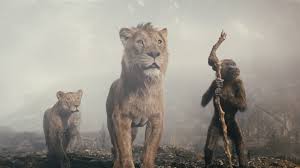
However, this realism came at a creative cost. Unlike the hand-drawn 1994 version, where characters could emote with expressive eyes and exaggerated body language, the 2019 animals were bound by the physical limitations of real creatures. A lion can’t raise its eyebrows in surprise or smile broadly in joy. This choice sparked debate among critics and fans: while the realism was breathtaking, it sometimes muted the emotional resonance of iconic scenes.
The Star-Studded Voice Cast
Another major component of the film’s production was its voice cast. Disney assembled a lineup that blended Hollywood talent, music legends, and fresh voices.
Donald Glover (Simba): Known for his work as an actor, musician (Childish Gambino), and writer, Glover brought youthful charm and emotional depth to adult Simba. His performance emphasized Simba’s vulnerability as well as his eventual strength.
Beyoncé Knowles-Carter (Nala): Casting Beyoncé was both a creative and commercial decision. Her global stardom ensured attention, but her voice also added gravitas to Nala, a character given more agency and leadership in this version. Beyoncé also contributed a new song, Spirit, to the soundtrack.
James Earl Jones (Mufasa): Perhaps the most nostalgic casting, Jones reprised his role from the 1994 film. His deep, commanding voice once again embodied the wisdom and authority of Simba’s father. Hearing him deliver iconic lines like “Remember who you are” gave the remake continuity and emotional power.
Chiwetel Ejiofor (Scar): Replacing Jeremy Irons was no easy task, but Ejiofor brought a darker, more menacing tone to Scar. His performance leaned less on flamboyant villainy and more on subtle menace, fitting the film’s realistic aesthetic.
Seth Rogen (Pumbaa) and Billy Eichner (Timon): This comedic duo became audience favorites. Their chemistry and improvisational humor brought fresh life to Timon and Pumbaa, offering comic relief without straying too far from the original.
John Oliver (Zazu): Known for his satirical wit, Oliver’s voice gave Zazu a slightly more frantic, comedic energy.
The casting choices reflected Disney’s strategy: combine nostalgia (Jones), musical talent (Beyoncé, Glover), and comedic appeal (Rogen, Eichner) to create a broad-reaching ensemble.
Music and Soundtrack
Music has always been central to The Lion King, and the 2019 remake treated it as both legacy and opportunity. Composer Hans Zimmer, who scored the 1994 original, returned to reimagine his own work with a more orchestral, epic sound. His score maintained the iconic motifs but updated them with richer instrumentation and new arrangements.
The classic Elton John and Tim Rice songs (Circle of Life, Hakuna Matata, I Just Can’t Wait to Be King, Can You Feel the Love Tonight) were faithfully re-recorded with the new cast. Some songs were slightly rearranged to fit the photorealistic tone, avoiding overly cartoonish performances.
Beyoncé’s involvement brought additional musical influence. She recorded Spirit as an original song for the film, placed during Simba’s return to Pride Rock. She also curated an entire companion album, The Lion King: The Gift, inspired by African sounds and featuring collaborations with artists across the continent. While Spirit was nominated for awards, opinions were divided on whether the new material enhanced or disrupted the flow of the film.

The Animation vs. “Live-Action” Debate
One of the most debated aspects of The Lion King (2019) was whether it should be considered “live-action” at all. Disney marketed it as such, grouping it with other live-action remakes. However, because the film contained no live-action footage—no actors, no physical sets—many argued it was essentially a fully animated film.
Jon Favreau clarified that the distinction lay in the filmmaking techniques. While the visuals were digital, the methods used to capture them (virtual cameras, live-action cinematography techniques) aligned more with live filmmaking than traditional animation. This blending of categories reflected broader shifts in cinema, where digital effects increasingly blur the line between animation and reality.
Production Challenges
The production was not without challenges. Rendering photorealistic fur, lighting, and environments required massive computing power. Each frame of the film was a technical achievement, often taking hours to render. Coordinating the voice cast—many of whom were international superstars with busy schedules—was another logistical hurdle.
Additionally, balancing fidelity to the original with the desire for freshness created creative tensions. How much should the film copy the 1994 version shot-for-shot? How much freedom should it take in reimagining scenes or expanding characters? Favreau walked a fine line, ultimately opting for a film that was faithful to the original but sprinkled with subtle updates.
A Showcase of Modern Filmmaking
Above all, The Lion King (2019) served as a showcase for modern filmmaking technology. It demonstrated how far CGI had come since the days of the original film. It also highlighted Disney’s growing role as not just a storyteller but a leader in technological innovation.
The production of The Lion King marked a milestone: a fully digital film presented with the trappings of live-action. It was both an artistic gamble and a technical triumph, paving the way for future uses of virtual production (later employed in projects like The Mandalorian).
Detailed Plot Summary
The Opening: Circle of Life
The film begins with one of the most iconic sequences in cinema: the Circle of Life. The sun rises over the African savannah, and animals from across the land gather at Pride Rock to witness the presentation of the newborn prince, Simba. Rafiki, the wise mandrill shaman, lifts Simba into the air as the animals bow in respect. This sequence, recreated nearly shot-for-shot from the 1994 original, immediately sets the tone: reverent, majestic, and visually spectacular. The photorealistic animals and landscapes give the scene the feel of a wildlife documentary, while Hans Zimmer’s updated score and the soaring vocals of Lebo M add emotional power.
Scar’s Resentment
We are introduced to Scar, Mufasa’s younger brother, who is visibly bitter about being excluded from the ceremony. Scar (voiced by Chiwetel Ejiofor) is lean, scarred, and cunning. His dialogue with Zazu, the hornbill and royal advisor, establishes his sardonic wit and thinly veiled resentment. Unlike Jeremy Irons’ flamboyant version in the original, Ejiofor’s Scar is more subdued but menacing, plotting in quiet shadows rather than theatrical displays.
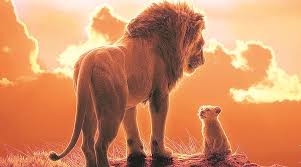
When confronted by Mufasa, Scar deflects with sly excuses, making it clear that he is jealous of Simba’s position as heir to the throne. The dynamic between the brothers reveals a long-standing tension: Mufasa embodies nobility and strength, while Scar represents ambition and bitterness.
Simba’s Childhood & Mufasa’s Lessons
As Simba grows, Mufasa (voiced once again by James Earl Jones) teaches him about responsibility and leadership. In a tender scene, Mufasa shows Simba the kingdom from atop Pride Rock, telling him: “Everything the light touches is our kingdom.” He warns Simba never to venture into the shadowy area beyond the borders, foreshadowing danger.
Mufasa emphasizes the importance of the “Circle of Life”—the balance between predators and prey, the cycle of birth and death. This lesson underlines the film’s central philosophy: true kingship is about respect for the natural order, not domination.
Simba’s curiosity and naivety, however, are easily exploited. Scar seizes the opportunity to plant seeds of mischief in the cub’s mind, suggesting that real bravery lies in exploring the forbidden lands.
The Elephant Graveyard
Defying his father’s warnings, Simba convinces his best friend, Nala, to accompany him to the Elephant Graveyard. Timed with the mischievous song I Just Can’t Wait to Be King, this sequence showcases Simba’s youthful arrogance and desire for freedom.
Once in the graveyard, the cubs encounter hyenas—Shenzi (voiced by Florence Kasumba), Kamari (Keegan-Michael Key), and Azizi (Eric Andre). Unlike the 1994 film’s comedic trio, the remake’s hyenas are darker and more threatening. Shenzi, in particular, emerges as a ruthless leader.
The hyenas corner Simba and Nala, but just as all seems lost, Mufasa arrives, ferociously driving the predators away. The moment underscores Mufasa’s strength and his fierce love for his son. Afterward, he reprimands Simba, reminding him that being a king is not about reckless courage but about understanding responsibility. In one of the most tender scenes, Mufasa shares the idea that past kings watch over from the stars—a motif that will return later with deep emotional weight.
Scar’s Plot: The Stampede
Scar escalates his plan to seize the throne. He lures Simba into a gorge, convincing him to wait for a “surprise.” Meanwhile, Scar conspires with the hyenas to trigger a wildebeest stampede.
The stampede sequence is one of the film’s most visually intense moments, with hundreds of photorealistic wildebeests charging through the gorge. Simba is caught in the chaos, clinging desperately to survival. Mufasa rushes in to save him, managing to lift Simba to safety but leaving himself vulnerable.

In a moment seared into pop culture memory, Mufasa hangs from the cliff and pleads for Scar’s help. Scar coldly digs his claws into his brother’s paws and whispers, “Long live the king,” before letting him fall to his death. The realism of the animation makes this betrayal chilling, though some critics argued the lions’ limited facial expressions muted the emotional devastation compared to the original.
Scar manipulates Simba into believing that Mufasa’s death was his fault. Wracked with guilt, Simba flees the Pride Lands. Scar instructs the hyenas to kill the cub, but Simba escapes into the wilderness.
Exile and New Friends
Exhausted and near death, Simba is found by Timon (Billy Eichner) and Pumbaa (Seth Rogen), a meerkat-warthog duo who live by the carefree philosophy of Hakuna Matata. Their humor and improvisation lighten the film after the tragedy of Mufasa’s death.
The film spends time showing Simba’s growth into adulthood under their care. Donald Glover takes over as Simba’s voice, bringing maturity and emotional nuance. The Hakuna Matata sequence provides comic relief while also highlighting Simba’s denial of his responsibilities. He embraces a life free of worry but suppresses his guilt and grief.
Nala’s Return and Awakening
Meanwhile, Scar seizes the throne, ruling with cruelty. Under his reign, the Pride Lands fall into ruin. The once-flourishing savannah becomes barren, as Scar and the hyenas upset the Circle of Life through overhunting and greed.
Nala (Beyoncé) eventually flees Scar’s oppressive regime, seeking help. She discovers Simba, now grown, living with Timon and Pumbaa. Their reunion is heartfelt, though Nala is shocked at Simba’s refusal to return.
Nala and Simba share Can You Feel the Love Tonight, a romantic sequence that also conveys the tension between Simba’s desire for freedom and his destiny as king. Nala urges him to take responsibility, but Simba remains haunted by his guilt.
Rafiki and the Vision of Mufasa
The turning point comes when Rafiki finds Simba and reminds him of his true identity. In a mystical sequence under the stars, Simba encounters the spirit of Mufasa, voiced once again by James Earl Jones. Mufasa urges Simba to “remember who you are” and reclaim his rightful place as king.
This moment rekindles Simba’s sense of duty and gives him the courage to confront his past. The sky filled with Mufasa’s spirit is one of the most spiritually resonant scenes in the film, tying back to the earlier lesson about the kings of the past watching over the living.
The Return to Pride Rock
Simba decides to return, with Nala, Timon, and Pumbaa at his side. The journey back is set against Beyoncé’s Spirit, a new anthem emphasizing resilience and destiny.
At Pride Rock, Simba finds Scar ruling tyrannically. Scar manipulates the lionesses and attempts to corner Simba by forcing him to admit responsibility for Mufasa’s death. Just when Simba falters, Scar makes the fatal mistake of confessing his role in the murder. Outraged, Simba rallies the lionesses against him.
A fierce battle ensues between Simba’s allies and Scar’s hyena army. Timon and Pumbaa provide comedic but effective support, while Nala leads the lionesses with ferocity.
In the climactic confrontation atop Pride Rock, Simba pins Scar. Unlike Scar, however, Simba shows mercy, offering Scar a chance at exile. Scar, ever treacherous, attacks again, but Simba ultimately overpowers him. Scar is driven into the mob of hyenas, who, betrayed by his cowardice, turn on him.
Restoration of the Pride Lands
With Scar defeated, Simba takes his place atop Pride Rock. The rains return, symbolizing the restoration of balance. The Pride Lands begin to flourish again.
In a full-circle moment, Simba and Nala are shown presenting their newborn cub to the gathered animals, just as Rafiki once did with Simba. The Circle of Life theme swells, underscoring the eternal cycle of birth, death, and renewal.
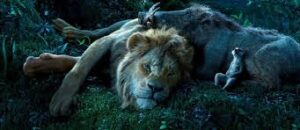
Themes & Analysis
The Circle of Life: Balance and Interconnection
At the heart of The Lion King (2019) lies the theme of the Circle of Life. Introduced in the film’s opening moments, this philosophy underscores the interconnectedness of all living beings. Mufasa’s lesson to Simba—that even kings must die and become grass, which is eaten by antelope, which in turn are eaten by lions—highlights the idea that power and existence are not about domination but about balance.
This ecological and spiritual worldview resonates strongly in the 2019 remake, which grounds its storytelling in a photorealistic depiction of nature. By making the animals and landscapes look real, the film emphasizes that the Circle of Life is not just metaphorical but ecological. Scar’s rule disrupts this natural order, causing environmental decay. His downfall symbolizes the restoration of balance.
Leadership, Responsibility, and Courage
One of the most enduring lessons of The Lion King is about leadership and responsibility. Simba’s arc is that of a reluctant hero who flees his duties out of guilt and fear, only to realize that true courage means confronting one’s past and serving others.
As a cub, Simba misunderstands bravery as recklessness, wanting to prove himself by facing danger in the Elephant Graveyard. Mufasa corrects this by teaching him that bravery is not about seeking danger but about knowing when to protect those in need. Later, as an adult, Simba must internalize this lesson when he chooses to face Scar.
In contrast, Scar represents the corruption of leadership. He desires power for selfish reasons and rules with exploitation, showing no concern for the well-being of his subjects or the land. This juxtaposition highlights the moral that a true leader serves, while a false leader consumes.
The theme resonates beyond the story itself, functioning as a universal parable about the responsibilities tied to power, privilege, and adulthood.
Family, Love, and Friendship
Family is central to the story. Simba’s bond with Mufasa forms the emotional core of the narrative. Mufasa’s presence lingers even after his death, reminding Simba (and the audience) that love and guidance transcend mortality. The starry-sky sequence where Mufasa tells Simba to “remember who you are” reinforces this timeless connection.
The maternal role of Sarabi, though less emphasized, reflects the strength of lionesses in maintaining pride unity during Scar’s reign. Nala’s expanded role in the remake also redefines family love—not just as romance, but as loyalty and shared responsibility.
Friendship adds another layer, particularly through Timon and Pumbaa. Their philosophy of Hakuna Matata initially serves as escapism for Simba, shielding him from responsibility. However, their unwavering loyalty later helps him regain the courage to return home. Their humor and camaraderie balance the film’s heavier themes, showing that even comic relief characters can embody meaningful friendship.
Betrayal, Greed, and the Corruption of Power
Scar embodies betrayal at its most personal. By murdering his own brother and manipulating his nephew, he commits acts that fracture both family and community. His betrayal isn’t just personal—it’s ecological. Under his rule, the Pride Lands become barren. His unchecked greed leads to overhunting, disrupting the Circle of Life.
The hyenas, too, represent greed and the dangers of exploitation. In the remake, Shenzi emerges as a powerful secondary antagonist, reflecting authoritarian leadership in miniature. Their pact with Scar highlights the theme of alliances built not on trust or balance but on mutual exploitation, destined to collapse.
Scar’s eventual downfall illustrates the dangers of unchecked ambition. His betrayal of both kin and kingdom leads not only to his demise but to the destruction of everything he sought to control.
Identity, Self-Discovery, and Redemption
A major thread in Simba’s journey is identity. Scar convinces him that he is responsible for Mufasa’s death, and Simba internalizes this guilt. His self-imposed exile becomes not only a physical journey but an identity crisis.
Living under Hakuna Matata allows Simba to escape, but it also keeps him from fully realizing his true self. Nala and Rafiki function as catalysts who remind Simba of his true identity: not a guilty exile but the rightful heir.
The vision of Mufasa crystallizes this theme. The line “Remember who you are” speaks to the importance of acknowledging one’s heritage, responsibilities, and true nature. Simba’s redemption comes not from denying his past but from embracing it. In doing so, he reclaims both his personal identity and his role within the Circle of Life.
Good vs. Evil: A Timeless Allegory
At its core, The Lion King is a timeless good vs. evil allegory. Mufasa represents order, compassion, and balance, while Scar represents chaos, selfishness, and destruction. Simba’s journey is about choosing which legacy to embrace.
What makes this theme resonate is its grounding in universal human experiences: the loss of a parent, the weight of expectations, the fear of failure, and the courage required to grow into adulthood. The photorealistic remake may strip away some of the exaggeration of the animated original, but the good vs. evil framework remains clear and powerful.
Mortality, Loss, and Legacy
The death of Mufasa remains the emotional centerpiece of the story. For many audiences, it is their first cinematic confrontation with mortality. The 2019 remake, through its realism, attempts to make this loss more visceral, though some critics argue it lacks the expressive tragedy of the animated version.
Nevertheless, Mufasa’s death is essential not just for shock value but for its thematic weight. It shows that even the strongest leaders are not immortal, that legacy is carried forward by the living, and that growth often comes from overcoming grief. Simba’s acceptance of this truth allows him to transcend his trauma and step into his father’s role.
Escapism vs. Responsibility
The Hakuna Matata philosophy offers one of the story’s most interesting contrasts. On one hand, it is joyful and liberating—a rejection of fear and worry. On the other, it represents dangerous avoidance. Simba’s adoption of this lifestyle is both healing (he finds family and peace) and limiting (he avoids his true responsibilities).
The film suggests that while temporary escapism is valuable, it cannot replace accountability. Responsibility is not a burden but a path to fulfillment. Simba’s rejection of permanent Hakuna Matata marks his transition from childlike avoidance to adult acceptance.
Feminist Undercurrents: Nala’s Strength
One of the notable updates in the 2019 version is the expanded role of Nala. In the original, she functioned largely as Simba’s childhood friend and love interest. In the remake, her independence and leadership are emphasized.
Nala actively challenges Scar’s rule, showing bravery in seeking help beyond the Pride Lands. Her strength in confronting Simba also reframes her not as a passive figure but as a catalyst for change. Beyoncé’s performance and the addition of Spirit further elevate Nala’s presence, making her a symbol of resilience and agency.
Redemption and Renewal
The ending of the film embodies themes of redemption and renewal. Simba redeems himself not by erasing his past but by facing it. Scar’s downfall clears the path for renewal—not only of Simba’s personal arc but of the Pride Lands themselves. The rain falling as Simba ascends Pride Rock is a classic metaphor for cleansing, rebirth, and the restoration of balance.
The final Circle of Life scene emphasizes continuity. Just as Mufasa once lifted Simba, Simba now lifts his own cub. The cycle continues, suggesting that while individuals pass, the legacy of love, duty, and balance endures.
Cinematography, Reception & Legacy
Cinematography and Visual Style
One of the most defining features of The Lion King (2019) is its cinematography, which was deliberately designed to resemble a live-action wildlife documentary. Director Jon Favreau and cinematographer Caleb Deschanel used “virtual cameras” inside a computer-generated savannah, allowing them to mimic real-world camera rigs and movements.
The realism achieved is staggering. Each blade of grass, ripple of water, and strand of fur was digitally rendered with painstaking detail. Animals move with the weight and rhythm of real creatures: lions breathe heavily after exertion, zebras twitch their ears at flies, and birds glide with subtle wing adjustments. This level of photorealism pushed CGI to its limits, creating visuals unlike anything seen before.
Immersion vs. Expressiveness Debate
This tension between immersion and expressiveness became one of the most talked-about aspects of the film. Supporters praised the unprecedented realism, claiming it immersed audiences in a believable world that honored nature. Detractors, however, felt the lack of expressive animation weakened iconic moments.
For example:
In the 1994 film, Simba’s anguished cry over Mufasa’s body is heart-wrenching, with exaggerated facial movements amplifying the emotion. In the 2019 version, Simba looks like a real lion cub—adorable but expressionless to some viewers.
Scar’s performance also divided audiences. Chiwetel Ejiofor’s voice acting was powerful, but without exaggerated facial cues, some felt the character lacked the theatrical flair that made Jeremy Irons’ version so memorable.
Box Office Performance
Regardless of critical debates, The Lion King (2019) was a commercial juggernaut. With a production budget estimated at around $250–260 million, the film grossed over $1.6 billion worldwide, making it the second-highest-grossing film of 2019 (behind Avengers: Endgame) and one of the highest-grossing films of all time.
Much of its financial success can be attributed to nostalgia. Adults who grew up with the 1994 original brought their children to see the remake, creating a multigenerational audience. The film also benefitted from Beyoncé’s involvement, which boosted global attention and brought in fans who might not otherwise have been interested.
Critical Reception
Critically, the film received mixed reviews. On review aggregator sites like Rotten Tomatoes, it sits in the mid-50s to 60s range—reflecting a sharp divide between audience enjoyment and critical skepticism.
Common praises included:
Visual spectacle: Critics unanimously agreed the CGI was groundbreaking and often breathtaking. Many compared it to Planet Earth in its realism.
Voice performances: Donald Glover, Beyoncé, and especially Billy Eichner & Seth Rogen (Timon and Pumbaa) were frequently highlighted as standouts.
Faithfulness to the original: Fans of the 1994 version often appreciated the shot-for-shot fidelity.
Common criticisms included:
Lack of emotional expressiveness: As mentioned earlier, many felt the animals’ realistic faces couldn’t convey the emotional weight of the story.
Unnecessary remake: Some critics argued that because the 1994 version still holds up, the 2019 version added little beyond visual spectacle.
Pacing and length: At nearly 30 minutes longer than the original, some felt the remake dragged in places without meaningful additions.
Despite these critiques, audiences generally embraced the film, as reflected in its A CinemaScore rating and massive box office success.
Cultural Impact and Conversations
The release of The Lion King (2019) sparked wide cultural conversations.
The Nature of Disney Remakes:
The film intensified debates about Disney’s strategy of remaking animated classics in “live-action” form. While some view these as creative reimaginings, others see them as profit-driven nostalgia exercises.Representation and Music:
The inclusion of Beyoncé, along with her companion album The Lion King: The Gift, highlighted African influences and celebrated Black artistry. This album, featuring artists from Nigeria, South Africa, and Ghana, introduced mainstream audiences to Afrobeat and African pop, creating cultural bridges beyond the film itself.Technology in Filmmaking:
The use of virtual production foreshadowed a new era in filmmaking. Techniques pioneered here were later used in The Mandalorian, revolutionizing how sets and environments are created.Animal Realism vs. Anthropomorphism:
The film sparked discussions about the role of realism in storytelling. Should animals look and behave exactly like their real-world counterparts, or should they retain anthropomorphic qualities to convey human emotion? This question remains relevant as studios continue to explore hyper-realistic CGI.
Legacy of the 2019 Remake
While opinions vary, there’s no denying that The Lion King (2019) holds a significant place in Disney’s modern era. It demonstrated the commercial viability of remakes, proving that nostalgia-driven projects can dominate the global box office.
Artistically, the remake’s legacy is more contested. Some see it as a missed opportunity—too faithful to the original, unwilling to take risks that might have redefined the story. Others see it as a faithful tribute that introduced a beloved classic to a new generation in an updated form.
Ultimately, the film’s legacy may lie less in its artistic reception and more in its industrial and cultural impact: a technological milestone, a global box office powerhouse, and a chapter in Disney’s ongoing project of remaking its animated library.
Conclusion:
Despite its controversies, The Lion King (2019) matters because it reflects both the strengths and limitations of modern Hollywood. It shows how nostalgia can drive audiences to theaters, how technology can redefine what cinema looks like, and how timeless stories retain their power even when retold in new forms.
Its themes of leadership, identity, and balance remain as resonant as ever. Its visuals remind us of the beauty of nature, even if mediated through pixels. And its cultural conversations remind us that cinema is not just about storytelling—it’s about the ways stories are retold, reshaped, and re-experienced across generations.
As Simba ascends Pride Rock at the film’s climax, audiences are reminded that while individuals and interpretations may change, the story’s essence endures. The Circle of Life continues—not only within the film but within the cultural life of Disney, cinema, and the millions who still find meaning in the journey of a lion cub who became a king.
